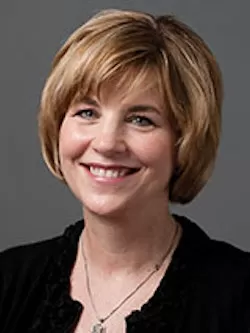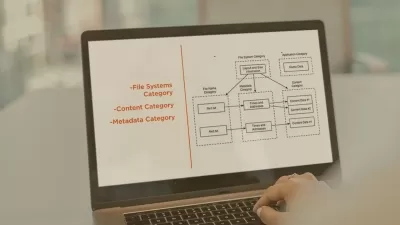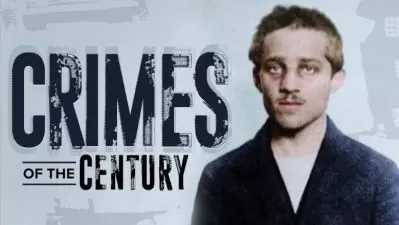Trails of Evidence: How Forensic Science Works
Elizabeth A. Murray
18:30:33
Description
Crime is as old as human society. So is the use of evidence, witnesses, and reason to solve crimes. The desire to identify lawbreakers and bring them to justice is so great that it has inspired countless stories, novels, plays, movies, and television series. But how accurate are the fictional portrayals of crime investigations? What happens behind the scenes when forensic scientists crack a case? The actual details are far more than a lesson in how detective dramas often get it wrong. Knowing how real forensic investigators approach real cases will help you
- serve as a better juror in a criminal trial or civil lawsuit;
- be a more effective witness if you ever see a crime take place or are a victim of one;
- sharpen your analysis of the endless array of crime reports that fill the news;
- think more critically in assessing the value of different types of evidence;
- learn about a wide range of technical fields that all come to bear in the investigation of crime.
What's more, an introduction to the principles of forensic science and a look at some case studies will give you a new appreciation for law enforcement, which in recent decades has seen a revolution in its ability to determine who committed a crime, how it was done, and often, why.
Taught by veteran forensic scientist and Professor Elizabeth A. Murray of the College of Mount St. Joseph, Trails of Evidence: How Forensic Science Works takes you from the crime scene to the lab to the courtroom in 36 riveting half-hour lectures that reveal the personality and passions of an investigative mind.
Forensic Science from the Inside
One of the nation's foremost experts in forensic anthropology, Professor Murray has participated in hundreds of investigations, involving homicides, missing persons, and mass disasters. In Trails of Evidence, she draws on this extensive experience to show how forensic science works from the inside with discussions of cases such as these:
- American Eagle Flight 4184: After a commuter plane went down in rural Indiana in 1994, Professor Murray was called to assist with identification of the victims, a daunting task that sheds light on how authorities mobilize to deal with the catastrophic loss of life.
- The cold case of a missing teen: Four decades after police gave up trying to identify a young woman found dead in a cornfield, Professor Murray examined the evidence and reached new conclusions that helped give a name to a teenager who met a tragic fate.
- The forgetful killer: A murder suspect agreed to take police to the spot where he buried one of his victims nearly two years earlier—except he couldn't find it. Given only a rough idea of where to search, Professor Murray used a few simple principles to locate the grave.
You also learn about landmark forensic cases that are classics in the history of crime solving, including these:
- Lindbergh kidnapping: The abduction and killing of Charles Lindbergh's infant son left a host of puzzling clues, including a homemade ladder. When a suspect was arrested, tool marks and other distinguishing features on the ladder were crucial in establishing his guilt.
- First use of DNA fingerprinting:The death of two teenage girls in central England in the 1980s led investigators to a strong suspect. However, a newly developed DNA technology developed at a local university exonerated an innocent man and led to the real killer.
- Ted Bundy: This notorious serial killer perfected a modus operandi that allowed him to escape police for years. A master at hiding his tracks, he was finally convicted based largely on testimony by a forensic odontologist, who matched bite marks on a victim to Bundy's teeth.
Learn to Read the Evidence
Unlike what's shown on TV, forensic scientists do not chase down leads and question suspects. Instead, they leave the legwork to the police and use the tools of science—chemistry, biology, physics, and psychology—to uncover the story that carefully collected and analyzed evidence has to tell.
But first they have to know what to look for at a crime scene. Professor Murray begins the course by introducing Locard's exchange principle. Proposed a century ago by the French forensic scientist Edmond Locard, this important idea holds that no one can commit a crime without leaving something behind or altering the surroundings, however imperceptibly.
Armed with the assumption that clues are scattered everywhere, forensic investigators learn how to approach and evaluate an unfamiliar setting. For example, Professor Murray recounts how a police officer told her how to tell the difference between a ransacked house and a messy housekeeper just by looking in the kitchen sink.
In the first section of the course, you explore protocols for investigating a scene, and you probe some classic types of evidence:
- Fingerprints: Learn the finer points of this venerable tool of identification, including how a common household product, Super Glue, is used to uncover latent prints.
- Shoeprints:Footprints are more commonly left behind at crime scenes than fingerprints. Criminals can't avoid walking on a surface, even when they're careful not to touch anything with their hands.
- Fibers:Microscopic fibers transferred to or from a crime scene have incriminated many criminals, including Wayne Williams, convicted of the Atlanta child murders in 1982.
- Blood: TV dramas get it wrong when they show dramatic blood spatters revealed by high-tech chemistry or lighting. What real forensic scientists see is a smear, made by a perpetrator's attempt to clean up evidence.
- Handwriting:Signs of hesitation, such as jerky starts and stops, can indicate that someone was trying to duplicate another person's handwriting by looking at a copy of it.
You also hear what goes into investigating a scene that has been nearly obliterated, whether by arson, bombing, or structural collapse. And you learn how the aftermath of an auto accident may hold all the clues needed to determine the sequence of events and who was probably at fault.
In the second part of Trails of Evidence, you focus on Professor Murray's specialty—analysis of human remains—discovering how the time of death is estimated, whether the body is discovered hours or years after the fatal event. She explains the difference between a coroner and a medical examiner. And using some powerful case histories, she describes the roles of various forensic scientists in establishing the cause and manner of death and how unknown persons are identified.
Professor Murray also delves into the psychology behind law enforcement, explaining that effective interrogation strategies are seldom as confrontational as depicted on TV. You will also hear about forensic profiling, the unreliability of eyewitness testimony, and the criminal mind. Then she takes you into the courtroom to see how evidence is presented to the final arbiters of its value: the judge and jury.
Science in Pursuit of Justice
Winner of the Sears-Roebuck Foundation Teaching Excellence and Campus Leadership Award, among other distinguished honors, Professor Murray brings to teaching the same gifts for clear, incisive, and creative thought that have made her so effective in the investigation of questionable deaths and unidentified persons.
In Trails of Evidence, she examines her subject from all angles, covering the principles and real-life practices of the diverse professions that come together in forensic science. And she offers several do-it-yourself projects that she uses with her students—from a simple exercise to test your observational skills to an experiment with blood spatter patterns that employs real-looking fake blood that you can make in the kitchen.
Not surprisingly, Professor Murray shares some of the classic qualities of her fictionalized counterparts. She is frank, meticulous, unflappable, and adept at diffusing the more shocking aspects of her work with humor. But she is also the real thing. She has witnessed firsthand the tragedy of innumerable crimes. What keeps her going is the quest to use the tools of forensic science to see that justice is done.
More details
User Reviews
Rating
Elizabeth A. Murray
Instructor's CoursesDr. Elizabeth A. Murray is a forensic anthropologist and also Professor of Biology at Mount St. Joseph University, where she teaches doctoral-level human gross anatomy and undergraduate-level anatomy and physiology, as well as forensic science. She earned her bachelor's degree in biology from Mount St. Joseph University and her master's degree in anthropology and Ph.D. in Interdisciplinary Studies in Human Biology from the University of Cincinnati.
Most of Professor Murray's forensic casework has been in Ohio and Kentucky, where she has participated in hundreds of investigations. She is one of fewer than 100 anthropologists certified as a Diplomate by the American Board of Forensic Anthropology. Professor Murray has been honored with the Sears-Roebuck Foundation Teaching Excellence and Campus Leadership Award, and she twice earned the Clifford Excellence in Teaching Award. She has served as an instructor for numerous organizations, including the U.S. Department of Justice, the Armed Forces Institute of Pathology, and the International Association of Coroners & Medical Examiners. Her television appearances include National Geographic's Buried Secrets, Discovery Health's Skeleton Stories, The New Detectives, and Forensic Files. Her book Death: Corpses, Cadavers, and Other Grave Matters was named one of the top ten summer titles for students by the American Association for the Advancement of Science. Her 2012 book, Forensic Identification: Putting a Name and Face on Death, was selected as one of the outstanding books of 2012 by the prestigious National Science Teacher's Association.

The Great Courses
View courses The Great Courses- language english
- Training sessions 36
- duration 18:30:33
- Release Date 2023/05/11











